Abstract
An examination was made of the relations between antigen, antibody and fixation of complement with foot-and-mouth disease virus (FMDV). It was found that complement fixation in this system follows the same principles as models developed in other antigen/antibody systems. The assumption that there is a relation of direct proportionality between the amount of complement fixed and the amount of antiserum reacting with constant antigen was found to be incorrect. An alternative method was proposed for the quantitative differentiation of FMDV strains by comparing the titres of an antiserum when reacting with optimum amounts of homologous or heterologous antigens.
Full text
PDF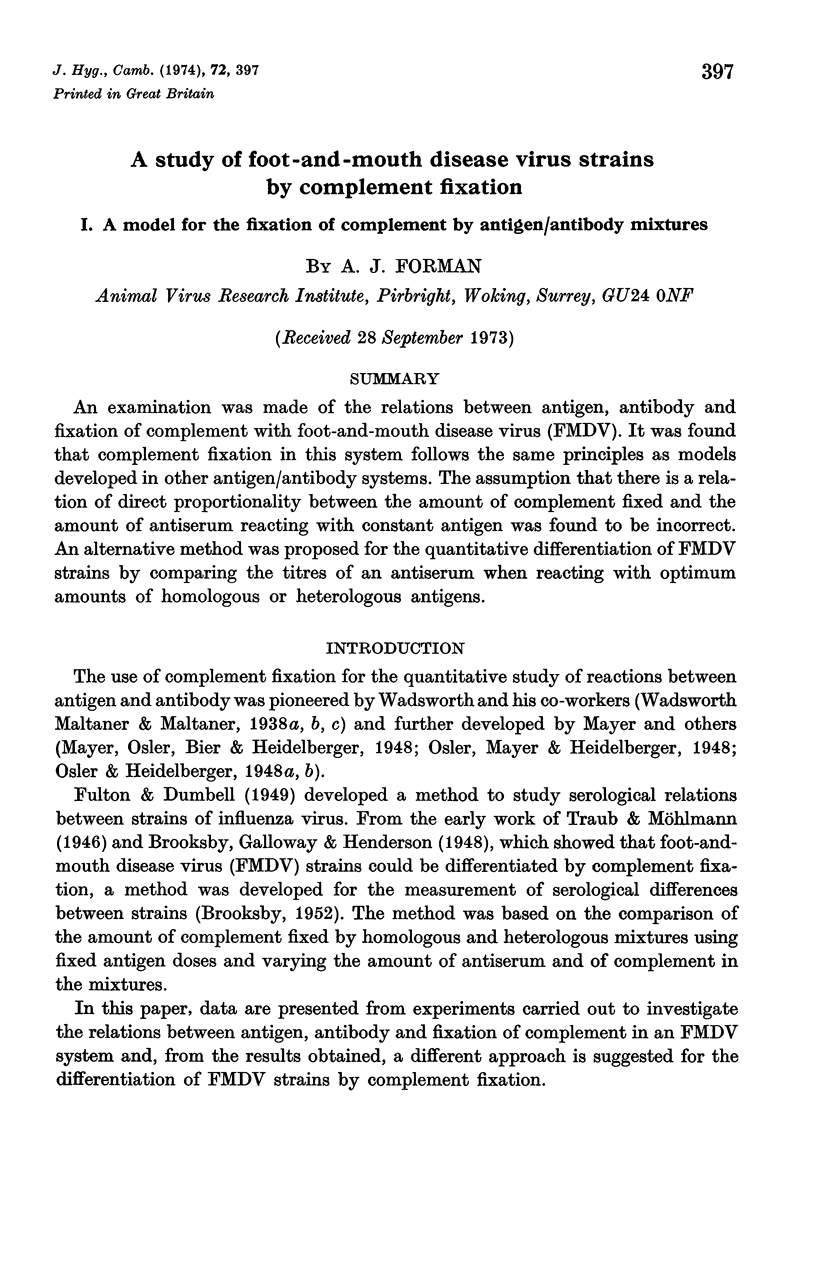
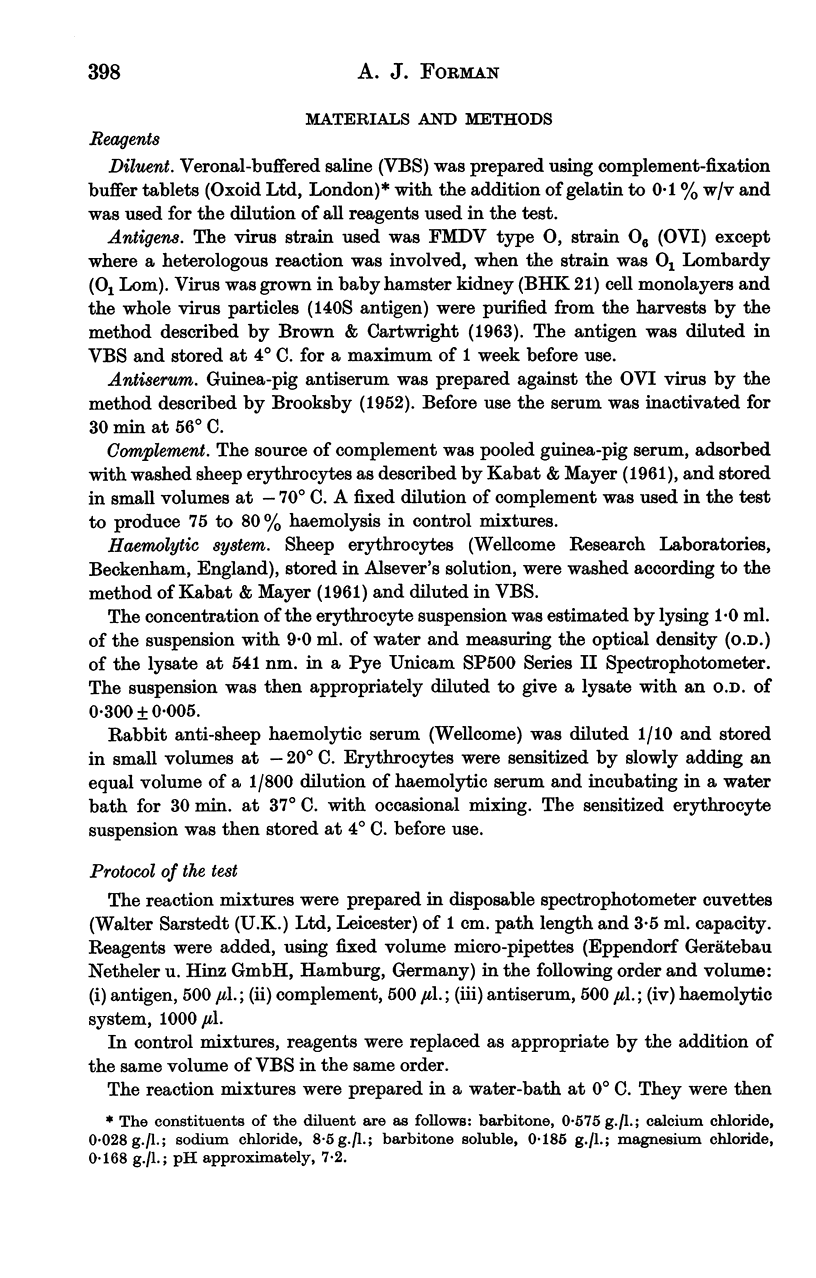
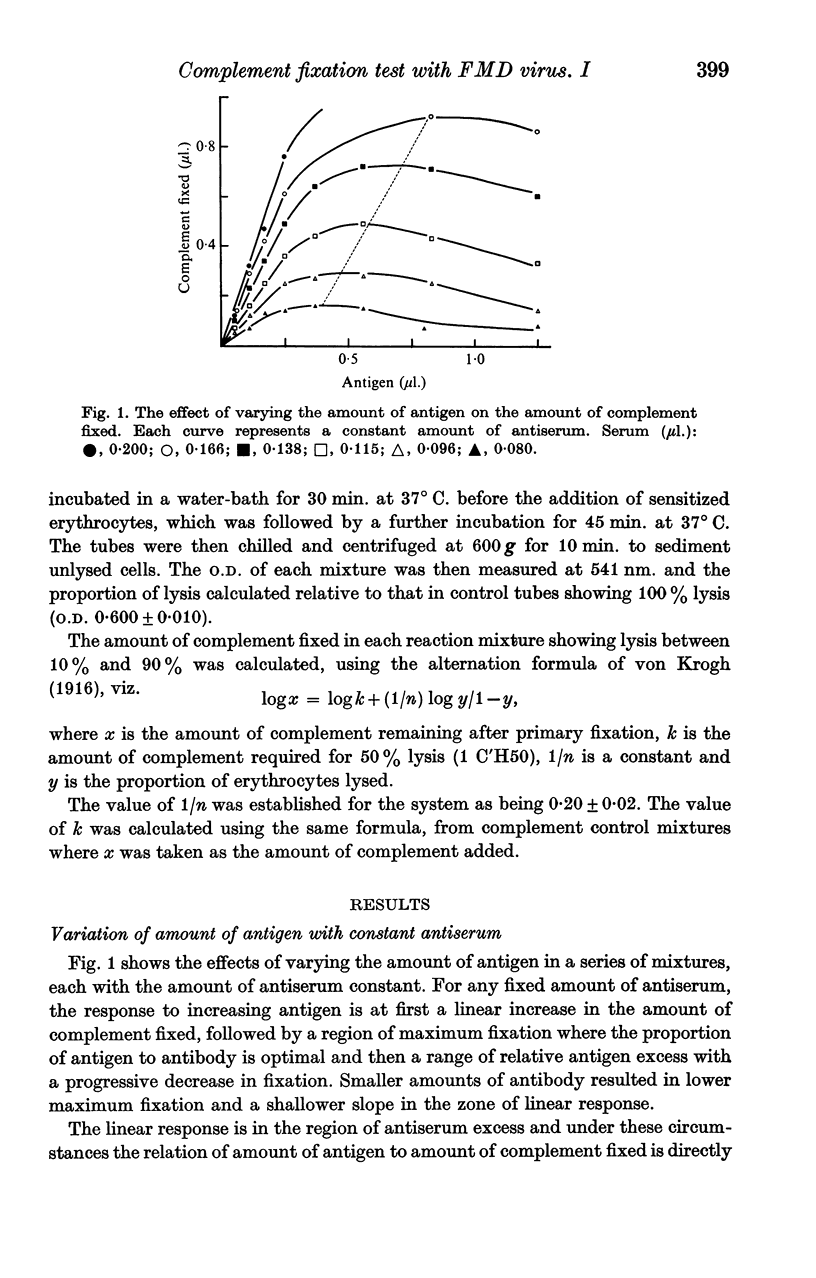
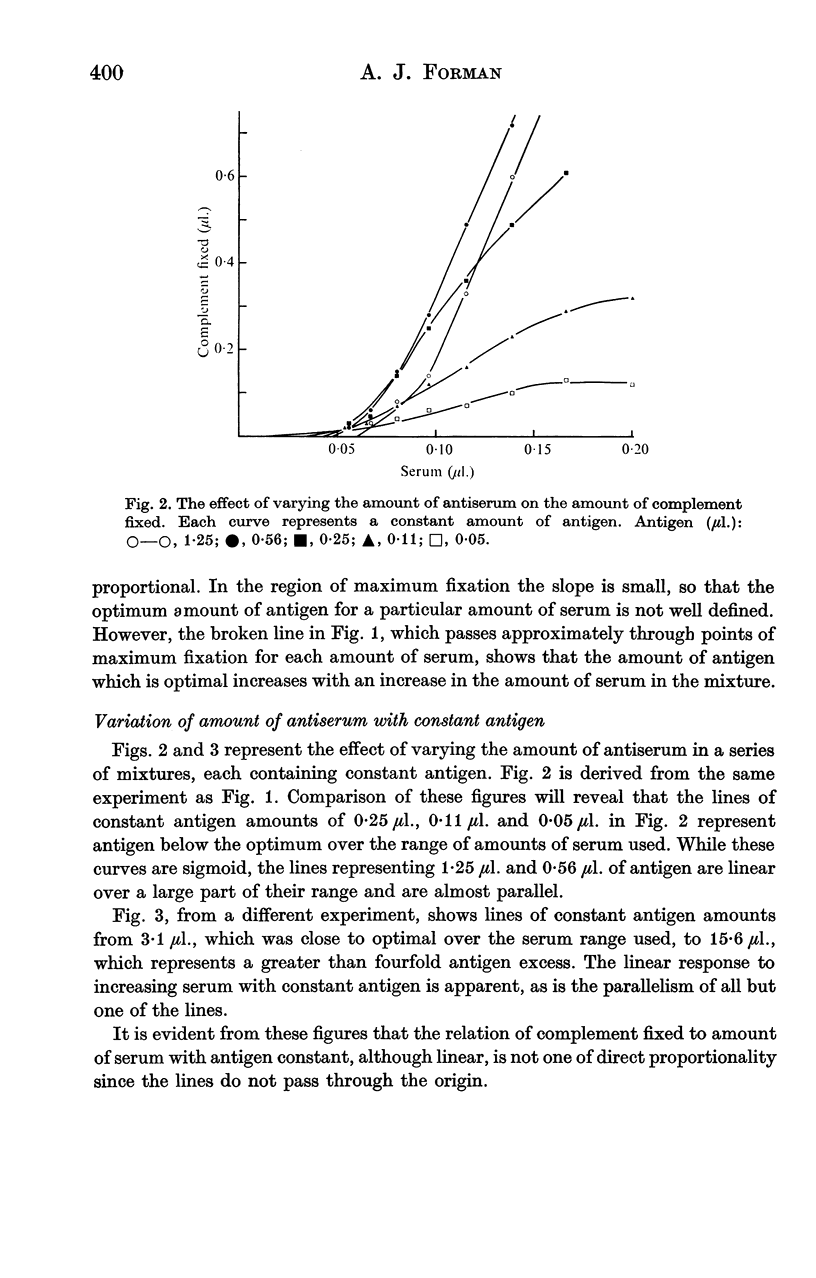
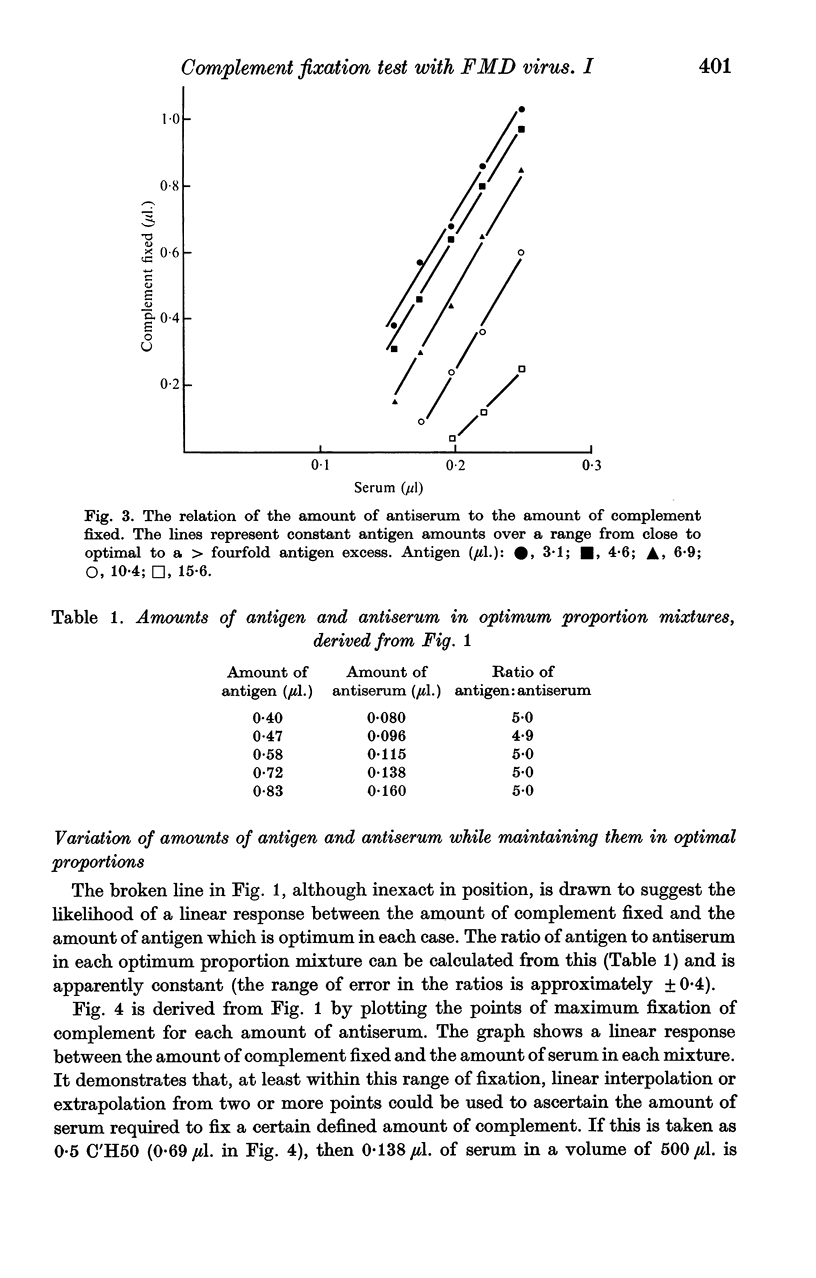
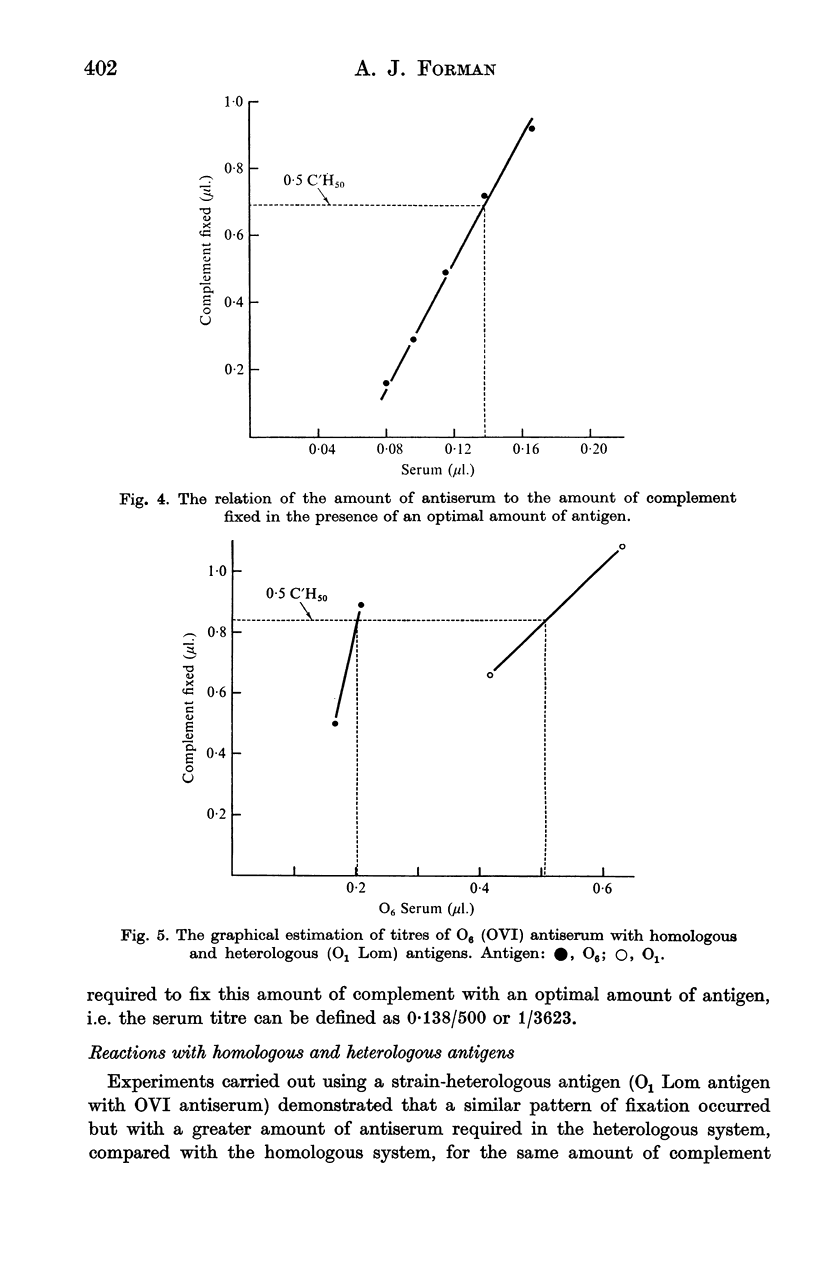
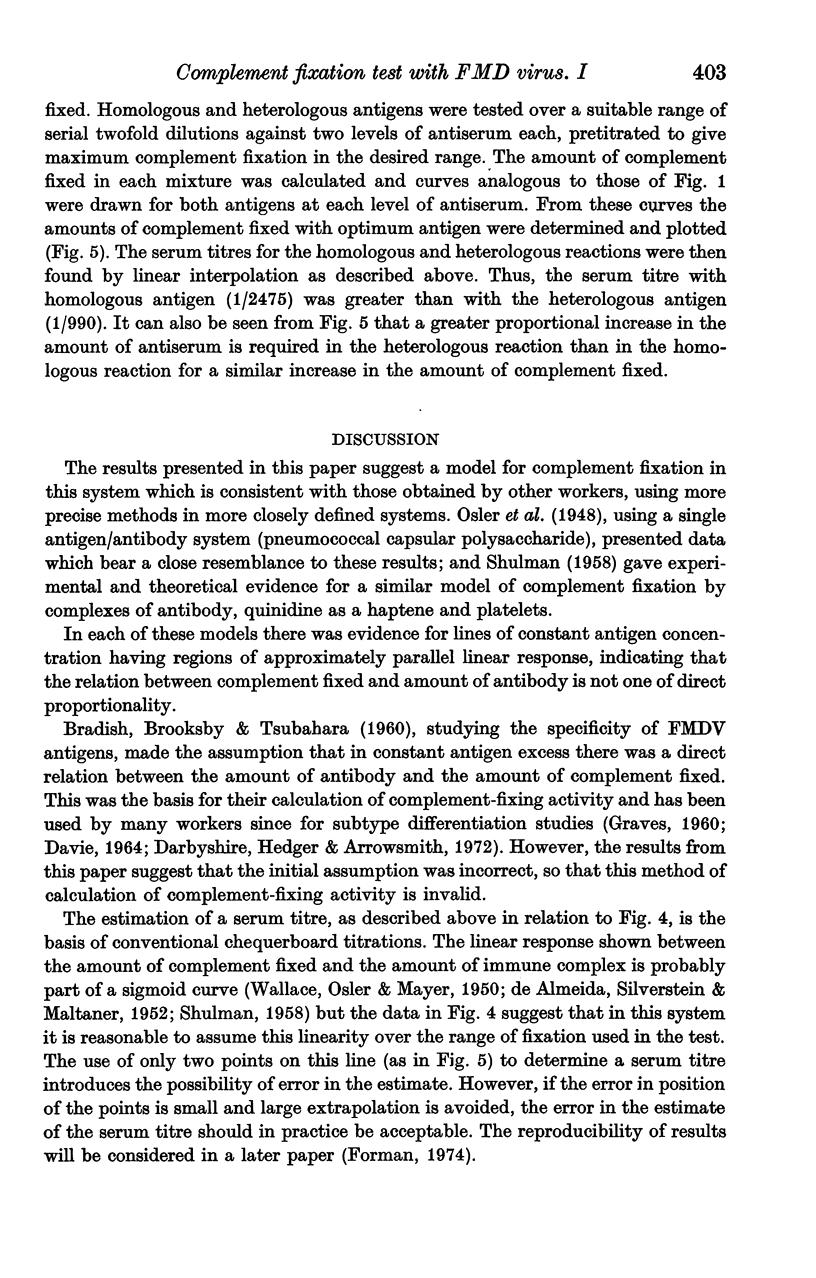
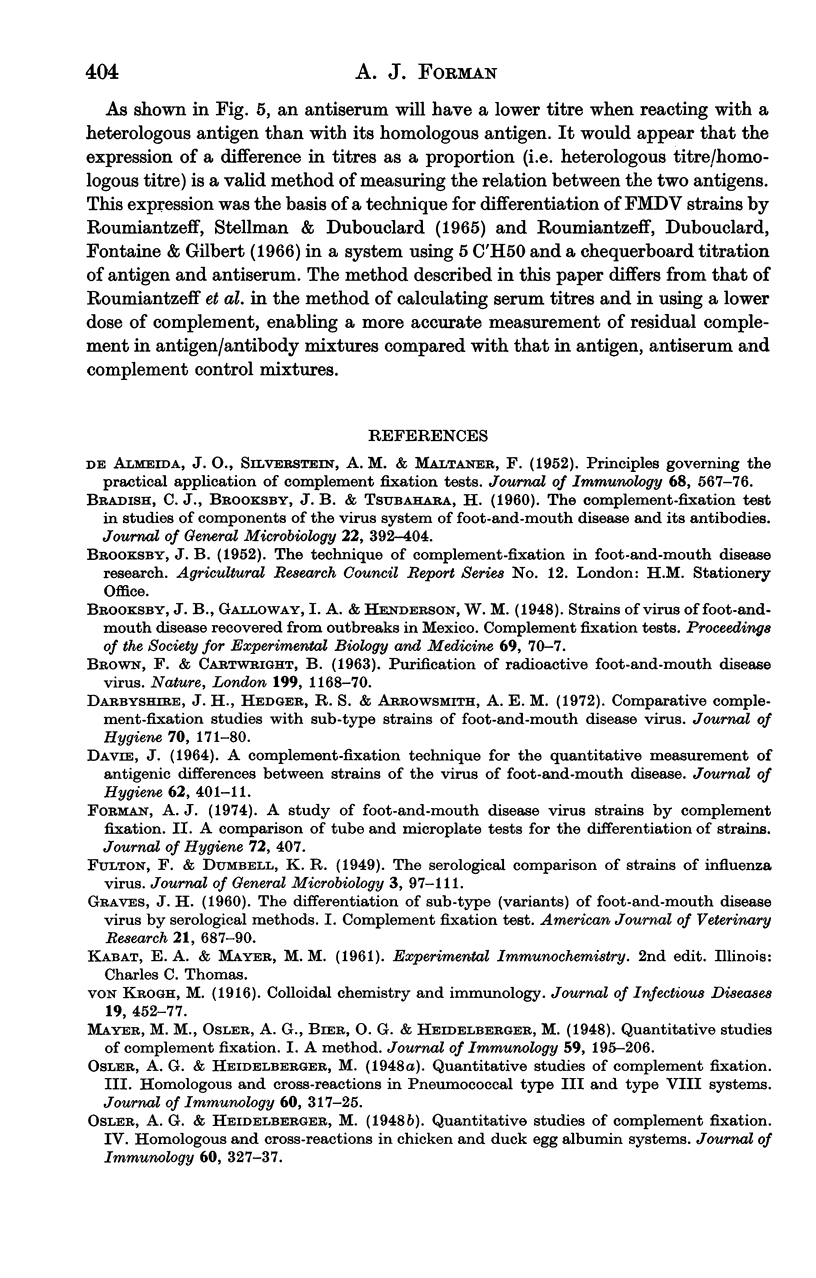
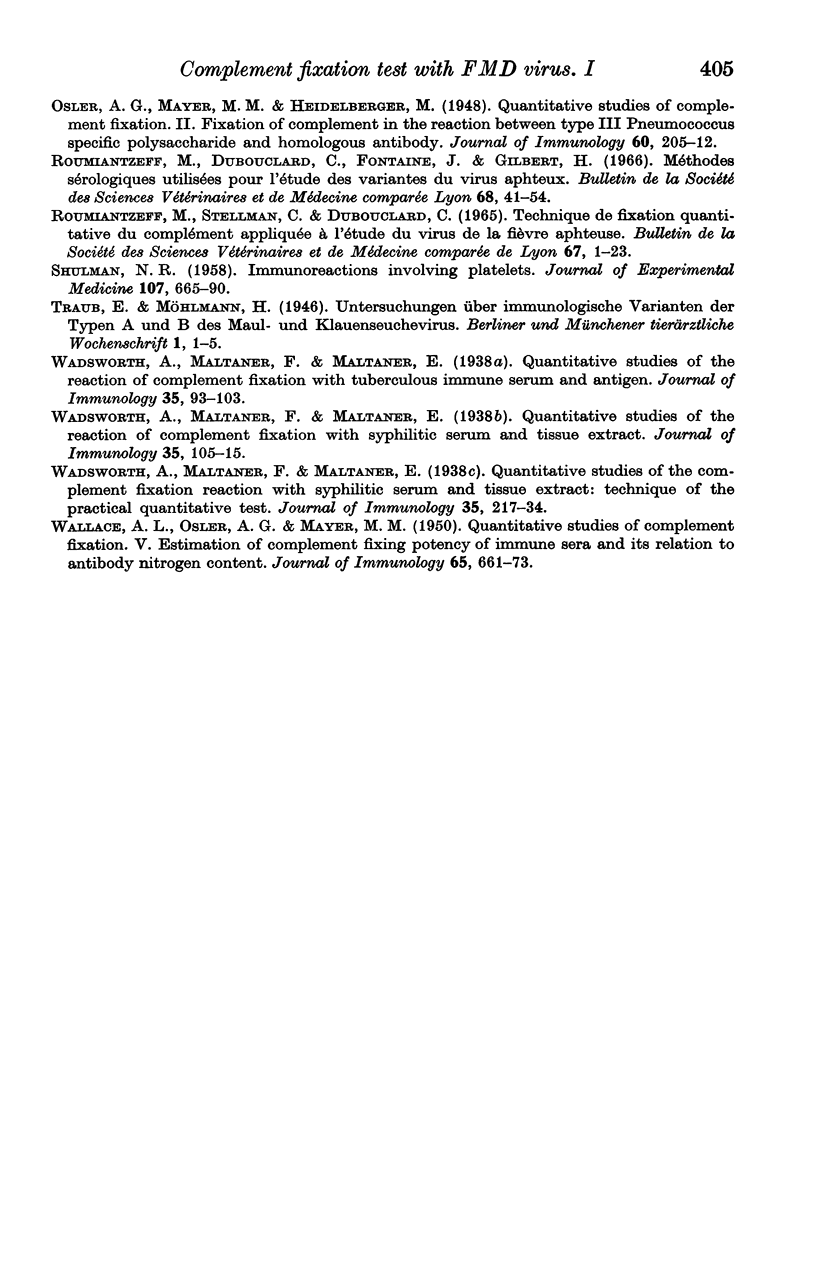
Selected References
These references are in PubMed. This may not be the complete list of references from this article.
- BRADISH C. J., BROOKSBY J. B., TSUBAHARA H. The complement-fixation test in studies of components of the virus system of foot-and-mouth disease and its antibodies. J Gen Microbiol. 1960 Apr;22:392–404. doi: 10.1099/00221287-22-2-392. [DOI] [PubMed] [Google Scholar]
- BROWN F., CARTWRIGHT B. PURIFICATION OF RADIOACTIVE FOOT-AND-MOUTH DISEASE VIRUS. Nature. 1963 Sep 21;199:1168–1170. doi: 10.1038/1991168a0. [DOI] [PubMed] [Google Scholar]
- DAVIE J. A COMPLEMENT FIXATION TECHNIQUE FOR THE QUANTITATIVE MEASUREMENT OF ANTIGENIC DIFFERENCES BETWEEN STRAINS OF THE VIRUS OF FOOT-AND-MOUTH DISEASE. J Hyg (Lond) 1964 Dec;62:401–411. doi: 10.1017/s0022172400040146. [DOI] [PMC free article] [PubMed] [Google Scholar]
- DE ALMEIDA J. O., SILVERSTEIN A. M., MALTANER F. Principles governing the practical application of complement-fixation tests. J Immunol. 1952 May;68(5):567–576. [PubMed] [Google Scholar]
- Darbyshire J. H., Hedger R. S., Arrowsmith E. M. Comparative complement-fixation studies with subtype strains of foot-and-mouth disease virus. J Hyg (Lond) 1972 Mar;70(1):171–180. doi: 10.1017/s002217240002221x. [DOI] [PMC free article] [PubMed] [Google Scholar]
- Forman A. J. A study of foot-and-mouth disease virus strains by complement fixation. II. A comparison of tube and microplate tests for the differentiation of strains. J Hyg (Lond) 1974 Jun;72(3):407–413. doi: 10.1017/s0022172400023640. [DOI] [PMC free article] [PubMed] [Google Scholar]
- GRAVES J. H. The differentiation of subtypes (variants) of foot-and-mouth disease virus by serologic methods. I. Complement-fixation test. Am J Vet Res. 1960 Jul;21:687–690. [PubMed] [Google Scholar]
- SHULMAN N. R. Immunoreactions involving platelets. I. A steric and kinetic model for formation of a complex from a human antibody, quinidine as a haptene, and platelets; and for fixation of complement by the complex. J Exp Med. 1958 May 1;107(5):665–690. doi: 10.1084/jem.107.5.665. [DOI] [PMC free article] [PubMed] [Google Scholar]
- WALLACE A. L., OSLER A. G., MAYER M. M. Quantitative studies of complement fixation. V. Estimation of complement-fixing potency of immune sera and its relation to antibody-nitrogen content. J Immunol. 1950 Dec;65(6):661–673. [PubMed] [Google Scholar]


